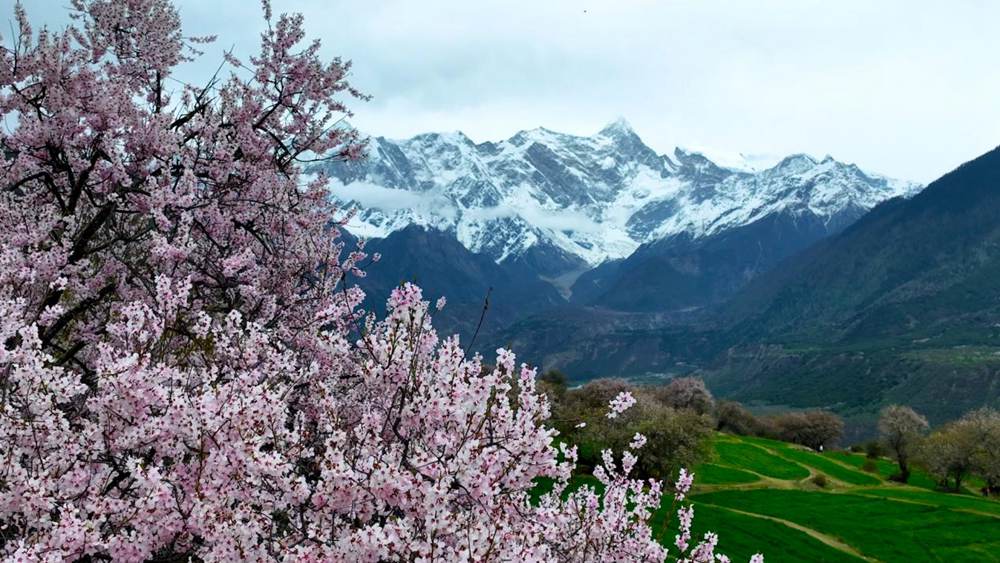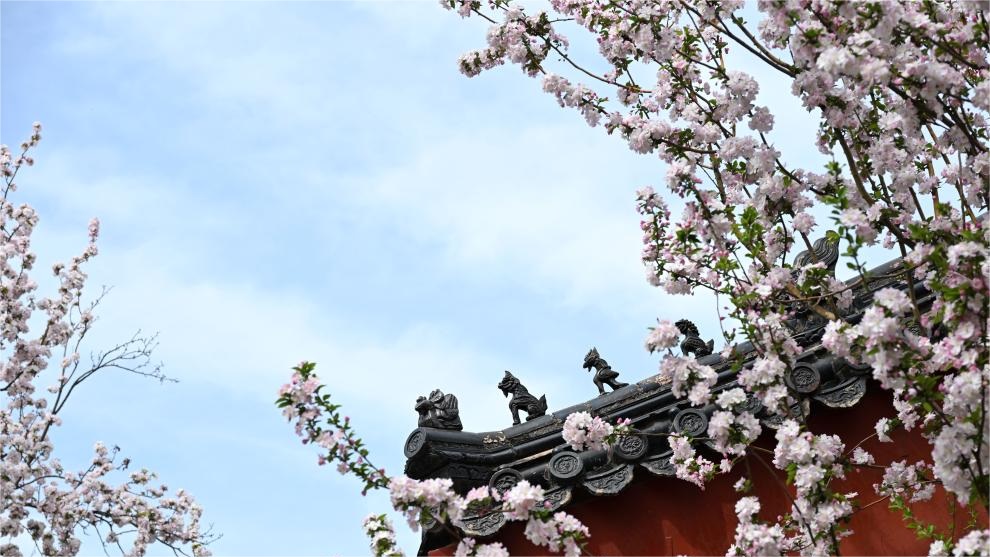Letter from China: China's textile capital weaves more vibrant future
HANGZHOU, April 9 (Xinhua) -- Wandering through the gentle drizzle and breeze of spring, I recently paid my first visit to Keqiao in Zhejiang Province, eager to discover how this riverine eastern district has emerged as China's most dynamic hub of textile manufacturing, trading and distribution.
Keqiao, a district in the city of Shaoxing, is renowned for its brilliant white houses, arched stone bridges, and tranquil canal-side alleys. Yet, without immersing myself in the district's picturesque charm, I found myself needling through a bustling market complex that offers almost everything related to textiles.
This is the "China Textile City" (CTC), the country's first national market dedicated to textiles. Threading my way through a maze of colorful and decorated fabric pieces, I was poised to unravel the success story of Keqiao's textile industry.
I met Xiao Xingshui, a veteran businessman spearheading the local textile scene. He said the CTC began with a group of boat hawkers selling textiles along Keqiao's interwoven waterways, following China's approval of textile trade as part of its reform and opening-up policy.
With the aim of creating a well-organized transaction platform, the local government set up a makeshift outdoor market for the first batch of textile dealers in the late 1980s. The CTC was beginning to take shape, and by 1992, it was officially elevated to national-level status.
Decades into its development, the CTC has transformed into a textile hub with the most comprehensive industrial chain on the planet, accounting for one-fourth of the world's annual fabric material transactions. Its transaction volume exceeded 360 billion yuan (about 51 billion U.S. dollars) in 2023.
I inquired with Xiao about the secrets behind the rise of Keqiao's textile industry, expecting him to delve into broad themes such as strategy or opportunity. Unexpectedly, his answer was short and simple: "No matter what you do, no matter how small, do your best."
Distinguishing itself among the 8,000-plus textile manufacturers in Keqiao, Xiao's enterprise, Shaoxing Qianyong Textile Co., exemplifies this entrepreneurial spirit. It has grown from a modest workshop to an officially designated supplier of uniform fabrics for the Beijing 2022 Winter Olympics and the Hangzhou Asian Games.
"An enterprise must forge a distinctive advantage," he said. "Although this feature may seem minor, it renders you irreplaceable, thereby helping you survive market competition." For Xiao, his company has found its trump card in digital direct printing techniques, which can produce water ripple patterns on nylon fabrics.
To maximize this unique advantage, the company has dedicated itself to research and development (R&D), focusing on technological upgrades and innovation. A prime example of this is its independently developed nano-ink technology, which notably improves printing precision and color vibrancy, and can create ink dispersion and 3D effects on functional fabrics. The technology has helped the company land orders from global sportswear giants such as Nike, The North Face, and Lululemon.
Xiao noted that like his company, numerous textile firms across Keqiao have initiated a technological innovation drive to cultivate their technological prowess.
Fascinated with Keqiao's commitment to innovation, I did some research and discovered that Keqiao is home to over 250 high-tech textile companies and boasts 27,000 R&D professionals. The district has built over 20 research institutions, including a provincial innovation center for modern textile technology, to better direct sci-tech resources toward business development.
Continuing my stroll through the market aisle, I found myself pondering the future of Keqiao's textile industry. To gain a better understanding, I engaged in conversations with a young entrepreneur, hoping to learn about his plans and visions for the future.
Despite being in his twenties, Du Jiexin is already locally renowned for running Shaoxing City Jialilong Textiles Co., Ltd., a company specializing in middle-market and high-end shirt fabric manufacturing for over two decades. The business was founded by Du's father.
Having grown up witnessing Keqiao's evolution into a textile hub, the young man entered his father's business, taking charge of creative design and publicity. While inheriting the practicality valued by Xiao and other seasoned textile entrepreneurs, Du seeks to blaze new trails for the industry.
"In my father's generation, textiles are all about producing raw materials for clothing, but I would like to push into clothing design and production as an expansion of our business," Du said. "Now, I run a fashion design team, and I have been actively inviting creative designers to get on board. My goal is to inject a fresh breath of style and creativity into the classic textile scene."
Du said his company is actively embracing the ongoing revival of traditional Chinese culture by integrating traditional materials and tailoring designs, including bamboo fabrics and the horse-face skirt, into its textile and apparel lines.
"China-chic is inarguably becoming the trendiest style, so we must ride the wave," Du said. The young man added that he also devoted a large portion of his schedule to social networks to draw inspiration from Generation-Z consumers and bring his company closer to them.
Throughout my tour of Keqiao, one word resonated within me: innovation. In this district, generations of textile entrepreneurs, both seasoned and emerging, have embraced the spirit of innovation, relentlessly surging to the forefront of the industry.
I also learned from the local market regulator that they are employing cutting-edge technologies to nurture the spirit of innovation. They have launched China's first AI-powered platform for textile duplication checking, allowing businesses to upload their unique fabric designs. Each check only takes a few seconds, efficiently safeguarding businesses' intellectual property rights.
According to a blueprint unveiled in November 2023, R&D spending is projected to account for 1.5 percent of the operating revenue of key textile firms in Keqiao by 2025, alongside the establishment of two national-level innovation platforms.
Additionally, it is anticipated that the fashion and creative sectors will evolve into an industrial cluster valued at 100 billion yuan, with the design sector alone contributing 50 billion yuan to the district's overall growth.
As China pursues innovation-driven development and strives to foster a favorable environment for all types of businesses, Keqiao, along with its textile industry, is set to advance toward a more vigorous and prosperous future.
Photos
Related Stories
- Wuzhou Juyan tea industry booms in E China's Zhejiang
- Zhejiang boosts foreign investment efforts
- Prosecutors indict former senior Zhejiang provincial political advisor
- Textile enterprises in Zhejiang advance green, high-tech production
- Keqiao District in E China promotes transformation, upgrading of textile industry
Copyright © 2024 People's Daily Online. All Rights Reserved.









